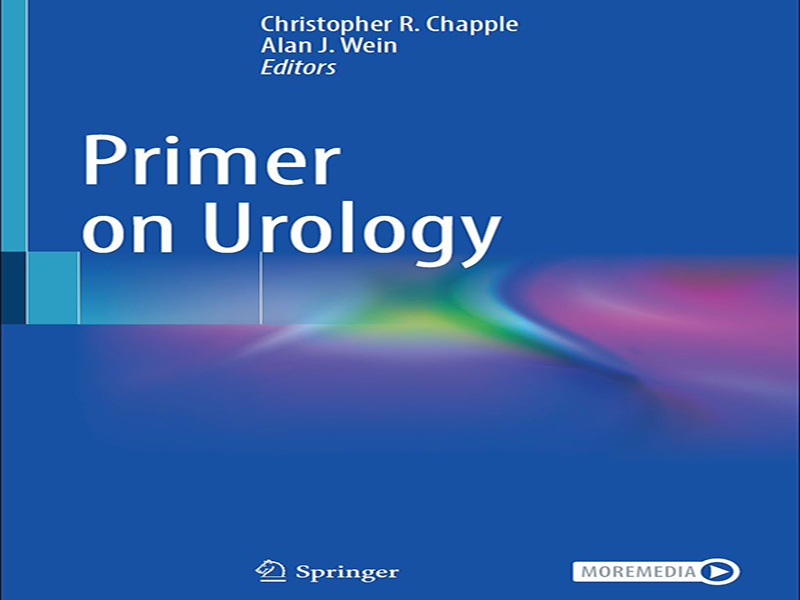- عنوان کتاب: Crystal Growth Fundamentals, Part I- Thermodynamics of Crystallization
- نویسنده: Peter Rudolph
- حوزه: بلور
- سال انتشار: 2025
- تعداد صفحه: 202
- زبان اصلی: انگلیسی
- نوع فایل: pdf
- حجم فایل: 16.1 مگابایت
رشد کریستال زمینه جذابی است که تقریباً در تمام جنبههای زندگی مورد نیاز است. متأسفانه، این واقعیت به سختی شناخته شده است. چرا؟ از یک طرف، این کار معمولاً فقط با تولید سنگهای قیمتی مصنوعی مرتبط است (اغلب، وقتی خودم را به افراد قبلاً ناشناس معرفی میکردم، از من پرسیده میشد که آیا قادر به تولید الماس یا حتی یک “گلدان کریستالی” هستم). در واقع، در عین حال، کریستالهای الماس نسبتاً کوچک اما بینقص را میتوان رشد داد. با این حال، آنها به هیچ وجه برای تجارت سنگهای قیمتی به اندازه میکروالکترونیکهای پرقدرت جالب نیستند. زیرلایههای ساخته شده از الماس تک کریستالی بالاترین رسانایی حرارتی را نشان میدهند و امکان اتلاف عظیم گرمای فرآیند را فراهم میکنند. و بنابراین ما در حال حاضر به یکی از مهمترین زمینههای کاربردی کریستالهای مصنوعی رسیدهایم (“گلدان کریستالی” ساخته شده از شیشه و بنابراین، هیچ ارتباطی با رشد کریستال نداریم که به سرعت آن را کنار میگذاریم). نانوکریستالها، لایههای نازک اپیتاکسیال با کیفیت بالا و کریستالهای حجیم برای میکروالکترونیک و اپتوالکترونیک، فوتونیک، محاسبات، ارتباطات، صرفهجویی و ذخیرهسازی انرژی، تولید و تشخیص تابش، پزشکی، بیوتکنولوژی، امنیت داخلی و غیره از اهمیت بالایی برخوردارند. از سوی دیگر، کریستالها معمولاً در قسمت بیرونی یک تجهیزات یا دستگاه فنی قابل تشخیص نیستند. اکثراً، آنها قطعات مرکزی کوچک یک دستگاه یا برش اصلی یک مدار یا در یک ماشین فرآیند هستند که کاملاً توسط پوشش محافظ و رساناها پوشانده شدهاند. به عنوان مثال، امروزه هر خودرو، کامپیوتر، تلفن همراه، سیتیاسکن یا ابزاری برای عملیات لیزری مجهز به دستگاههایی است که از قطعات کریستالی مختلف ساخته شدهاند. بار زیادی از آنها به طور مستقیم به عنوان یک صفحه نمایش پیکسلی ساطع کننده نور قابل مشاهده است. به ندرت میتوان کریستالهای بزرگتری را به شکل ویفرهای سیلیکونی بسیار بزرگ، مانند سلولهای خورشیدی، مشاهده کرد. یا چه کسی فوراً میداند که لنزهای عظیم با قطر ۳۰۰ میلیمتر در سیستمهای لیتوگرافی با طول موجهای بسیار کوتاه (به اصطلاح پلههای موجی) از تک بلورهای CaF2 ساخته شدهاند؟ با این حال، مشکلسازترین جنبهی کمبود عمومی دانش در مورد تک بلورها و رشد بلور، فقدان آموزش و ارائه ناکافی رسانهای است. معمولاً تک بلورهای مصنوعی در چارچوب فیزیک، شیمی و علوم مواد، از اهمیت ثانویه برخوردار هستند. عمدتاً، اصول کریستالوگرافی و رشد آنها و همچنین کاربردهای گسترده فقط در مقدمه بیان شده است. بدیهی است که این امر به این واقعیت مربوط میشود که تسلط بر فرآیندهای کریستالیزاسیون و اپیتاکسی در بالاترین سطح ممکن، نیازمند دانش عمیق میان رشتهای است که فیزیک، شیمی، ریاضیات، کریستالوگرافی، علوم مواد، الکترونیک، اتوماسیون، مهندسی و غیره را با هم ترکیب میکند. امروزه دانش مقدماتی و ویژه زیستشناسی و پزشکی نیز به آن تعلق دارد. این حقایق، حوزه وسیع رشد بلور را به یک شاخهی علمی میان رشتهای چالشبرانگیز و تقریباً مستقل ارتقا میدهد. متأسفانه، سطح فعلی آموزش دانشگاهی مرتبط، این چالش را برآورده نمیکند. حتی در دهههای گذشته، آموزش در این زمینه رو به کاهش بوده است. با نگاهی به وضعیت بینالمللی در آغاز قرن بیستم، در مقایسه با امروز، بخشهای دانشگاهی و آزمایشگاههای تحقیقاتی بسیار بیشتری به اصول، آزمایشها و پیشرفتهای فناوری رشد کریستال میپرداختند. در حال حاضر، تنها دو مؤسسه خودگردان برای رشد کریستال در برلین (آلمان) و خارکف (اوکراین) وجود دارد. البته، علاوه بر این، مؤسسات عالی متعددی در زمینه علوم مواد با گرایش جزئی به کریستال، مانند ایالات متحده آمریکا، ژاپن، چین، سوئیس، کره جنوبی، سنگاپور و هند، وجود دارند. با این حال، دانشگاهیان جوان که دانش ویژهای برای تحقیقات مورد نیاز خود در مورد رشد کریستال دارند، کجا و چگونه آموزش میبینند؟ میخواهم به خوانندگان یادآوری کنم که تا زمان اتحاد مجدد آلمان، در دو بخش مستقل کریستالوگرافی در دانشگاههای برلین و لایپزیگ، “دیپلم کریستالوگرافرها” با دانش جامع در مورد رشد و تجزیه و تحلیل کریستال آموزش دیده بودند. علاوه بر دروس پایه فیزیک، شیمی و کریستالوگرافی، دانشجویان در سخنرانیهای عمیقی در مورد ترمودینامیک و سینتیک گذار فاز، اصول و فناوریهای رشد کریستال، نقصها و کاربردهای کریستال شرکت میکردند. من خودم چندین دهه در برلین در این رشتهها تدریس کردم و بر دانشجویان دکترای متعددی در زمینه رشد کریستال نظارت داشتم. متأسفانه، چنین آموزش هدفمندی دیگر وجود ندارد. پس از یکی از سخنرانیهای علمی محبوب من در مورد رشد و کاربرد کریستال در سال ۲۰۱۱ در یک دبیرستان، یکی از دانشآموزان مشتاق از من پرسید: «کجا میتوانم این موضوع فوقالعاده را مطالعه کنم؟». متأسفانه، پاسخ من «هیچ جا…» بود. امروزه، مانند هر جای دیگری در جهان، یک دانشمند جوان که وظیفهای در مورد رشد و تجزیه و تحلیل یک ماده کریستالی جدید، نانوکریستال یا لایه اپیتاکسیال به او محول شده است، باید خود را در یک مطالعه مستقل و وقتگیر از طریق کتابهای درسی و دادههای اینترنتی، بدون هیچ گونه اطلاعات نیمهدقیق، آشنا کند.
Crystal growth is a fascinating field that is more and more needed in almost all walks of life. Unfortunately, this fact is hardly known. Why? On the one hand, this task is typically associated with the production of artificial gemstones only (often, when I introduced myself to previously unknown persons, I was asked whether I am able to produce a diamond or even a “crystal vase”). Indeed, meanwhile relatively small but perfect diamond crystals can be grown. However, they are nowhere near as interesting for the gemstone trade as they are for high-power microelectronics. Substrates made of single crystalline diamond show highest thermal conductivity, enabling an enormous dissipation of process heat. And so we have already reached one of the most important application fields of artificial crystals (the “crystal vase” made from glass and, thus, nothing to do with crystal growth we quickly put aside). Nanocrystals, high-quality epitaxial thin films, and bulk crystals are of high importance for micro- and optoelectronics, photonics, computing, communications, energy saving and storage, radiation generation and detection, medicine, biotechnology, homeland security, and so on. On the other hand, crystals are usually not recognizable on the exterior of a technical equipment or device. Mostly, they are small-sized centerpieces of a device or the basic slice of a circuit or in a process machine entirely covered by protective casing and conductors. For instance, today each automobile, computer, cell phone, CT scanner, or tool for laser operations is equipped with devices made of various crystalline pieces. A large charge from them is directly visible as a light-emitting pixel display. Rarely are bigger make of a crystal in the form of quite large silicon wafers to be seen, as in solar cells. Or, who knows right away that the huge lenses with a diameter of 300 mm in lithography systems of ultra-short wavelengths (so-called waver steppers) are made from CaF2 single crystals? However, the most problematic aspect of the general lack of knowledge about single crystals and crystal growth proves to be the absence of education and inadequate media presentation. Usually, artificial monocrystals are treated as of secondary importance within the framework of physics, chemistry, and materials science. Mostly, their crystallographic and growth principles as well as broad applications are outlined in introduction only. Obviously, this has to do with the fact that the mastery of crystallization and epitaxial processes on highest level as possible requires a profound interdisciplinary knowledge that combines physics, chemistry, mathematics, crystallography, materials science, electronics, automation, engineering, and so on. Nowadays elementary and special knowledge of biology and medicine also belong to it. These facts upgrade the wide field of crystal growth to a challenging quasi-selfcontained interdisciplinary branch of science. Unfortunately, the current level of related academic education does not meet this challenge. Even during the last decades, training in this field is decreasing. Looking back on the international situation at the turn of the century, compared with today, many more academic departments and research laboratories dealt with the fundamentals, ex periments, and technology developments of crystal growth. At present, there are only two autarkic institutes for crystal growth in Berlin (Germany) and Kharkiv (Ukraine). Of course, additionally, numerous excellent institutes of materials science with partial orientation on crystal exist, as in the USA, Japan, China, Switzerland, South Korea, Singapore, and India. However, where and how the young academics having a special knowledge for their needed crystal growth research are educated? I would like to remind the readers that until the German reunification in two self-dependent departments of crystallography at the universities of Berlin and Leipzig were trained “Diploma Crystallographers” with comprehensive knowledge on crystal growth and analysis. In addition to the basic courses of physics, chemistry, and crystallography, the students attended profound lectures on thermodynamics and kinetics of phase transition, crystal growth fundamentals and technologies, defects, and crystal applications. I by myself lectured for many decades in Berlin such disciplines and supervised numerous PhD students on crystal growth. Unfortunately, such goal-oriented education no longer exists. After one of my popular scientific lectures on crystal growth and application in 2011 in a high school, one of the enthusiastic pupils asked me “where can I study this fantastic subject?”. Sadly, my answer was “nowhere. . .”. Today, as anywhere in the world, a young scientist who is assigned a task on growth and analysis of a new crystal material, nanocrystal or epitaxial layer must familiarize themselves in a time-consuming independent study via textbooks and internet data, however, without any seminar-style discussions and practical trainings. Fortunately, there are some occasionally organized international and national schools on crystal growth providing over a period of about 1-week fundamental lectures. Over the years, the high interest and visitor volume at such training courses are the evidence that the demand of specialists contradicts the actual situation of missing academic education yet. Therefore, it is also clear why according to the statistics and scores of publication databases even reviews and editions on crystal growth and defect formations show exceptionally high read rates.
این کتاب را میتوانید از لینک زیر بصورت رایگان دانلود کنید:
Download: Crystal Growth Fundamentals, Part I- Thermodynamics of Crystallization



































نظرات کاربران